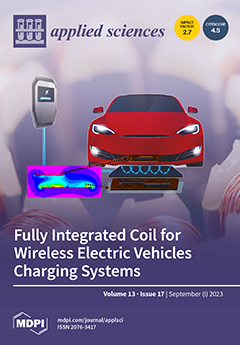Eucalyptus globulus leaves contain various types of phenolic metabolites related to their antioxidant effects such as acids, catechin, flavonoids, and others. To optimize its antioxidative phenolic contents,
E. globulus was extracted under various solvent conditions using 0, 10, 30, 50, 70, 90, and
[...] Read more.
Eucalyptus globulus leaves contain various types of phenolic metabolites related to their antioxidant effects such as acids, catechin, flavonoids, and others. To optimize its antioxidative phenolic contents,
E. globulus was extracted under various solvent conditions using 0, 10, 30, 50, 70, 90, and 100% ethanol. The 50% ethanol extract possessed the highest content of total phenolics with 497.7 mg GAE (gallic acid equivalent)/g extract. In contrast, the highest content of total flavonoids was evaluated in the 100% ethanol extract, having 169.3 mg QE (quercetin equivalent)/g extract. The antioxidant activity of various extraction conditions was assessed against the radical scavenging effect of DPPH (SC
50 = 188.2~5841.7 μg/mL) and ABTS (SC
50 = 14.2~171.3 μg/mL). The major chemical composition of
E. globulus leaves was identified as including salicylic acid β-D-glucuronide (
1), chlorogenic acid (
2), epicatechin (
3), 2″-O-galloylhyperin (
4), isoquercitrin (
5), isorhapontin (
6), quercitrin (
7), and quercetin-3-O-glucuronide (
8) using LC-Q-TOF/MS analysis. Among them, the identified metabolites were clarified and their contents in the extracts were calculated via quantitative analysis using HPLC at 254 nm. The flavonoids (
4,
5,
7, and
8) were determined to have an influence on the TPC, TFC, and antioxidant activity of
E. globulus leaves. The results suggested that optimizing the extraction conditions can result in appropriate chemical composition and antioxidant activity.
Full article





